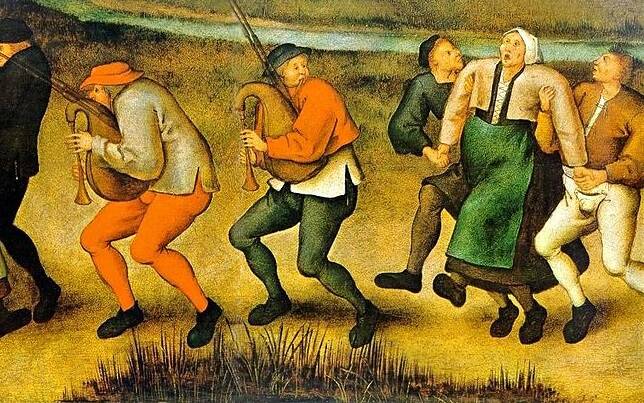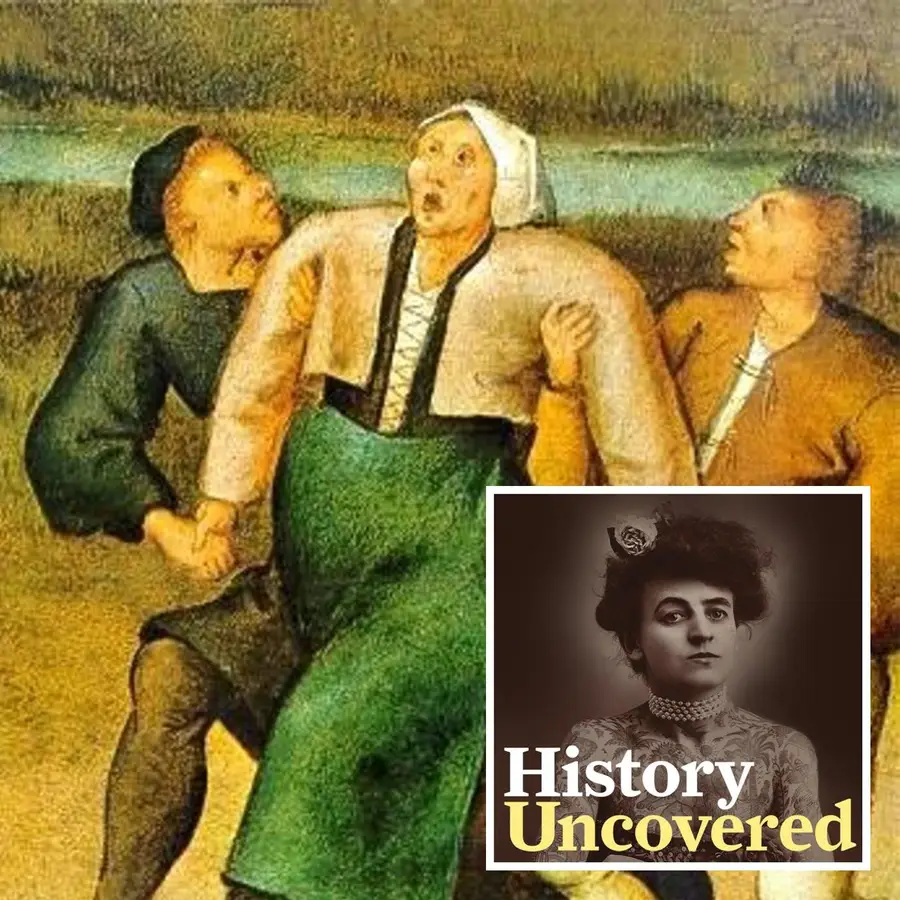Why did as many as 400 people suddenly start dancing uncontrollably in present-day France one day in the early 16th century? This is the baffling story of the Dancing Plague of 1518.
On July 14, 1518, a woman identified only as Frau Troffea stepped out of her house in Strasbourg, Alsace (in present-day France) and started to dance. After hours, drenched in sweat and twitching, she finally collapsed. Then, she got up and started again — and again the next day. By the third day, her feet were bruised and bloody but still she continued to dance.
This was the beginning of the Dancing Plague of 1518. No one knows why Frau Troffea started to dance or — more puzzlingly — why as many 400 people eventually joined her. Their involuntary dancing continued for nearly two months, causing as many as 100 people dropped dead from exhaustion.
As the dancing inexplicably continued, alarmed officials tried to offer an explanation. Some doctors suggested that “hot blood” was the cause, and claimed that continued dancing would “dance” the fever away. Some city officials even brought in professional dancers and musicians to accompany the dancers but this did little to help.
Indeed, nothing could stop the dancing. Many of the dancers dropped dead, one by one, until that September. Then, the Dancing Plague of 1518 stopped as suddenly and mysteriously as it had begun.

Wikimedia CommonsThe Dancing Plague of 1518 may have caused the deaths of more than 100 people who simply could not stop moving weeks on end.
To date, the causes of the Dancing Plague are unknown. But strangely, what happened in Strasbourg is not the first documented case of unexplainable mass dancing. The same bizarre phenomenon reportedly took place in Switzerland, Germany, and Holland, though on a much smaller scale.
So what exactly caused hundreds of people to start dancing without being able to stop?
At the time, some locals suspected that the Dancing Plague had been caused by St. Vitus, a Sicilian saint martyred in 303 C.E. who could purportedly curse sinners with uncontrollable dancing mania. Though this is unlikely, the mere belief in St. Vitus’ powers — combined with stress caused by disease and famine — could have led to mass hysteria.
That’s possible, but it’s far from the only explanation that historians have offered over the years to explain this bizarre historical event. In fact, one of the most curious — and perhaps the most likely — explanations has to do with moldy bread that the townspeople may have consumed.
Learn more about the bizarre history of the Dancing Plague of 1518 which saw dozens of people dance themselves to death.
Learn more about the music used in our podcast. History Uncovered is part of the Airwave Media network. Learn more about your ad choices by visiting megaphone.fm/adchoices.






